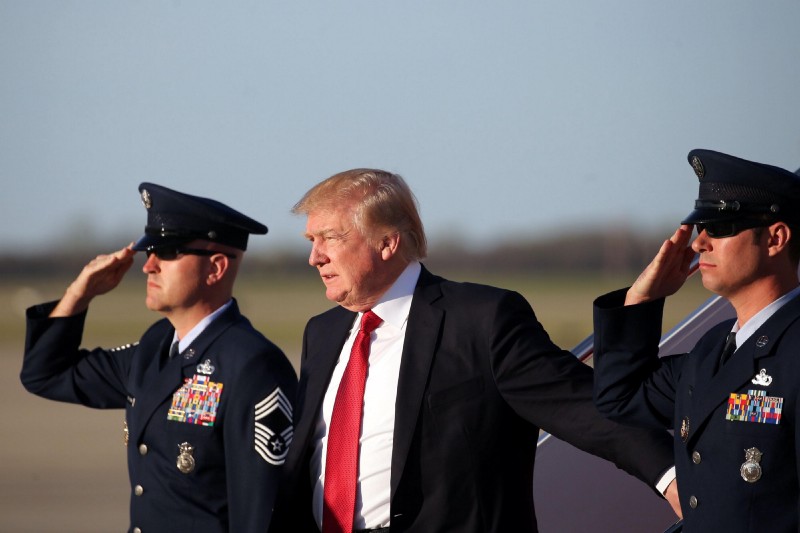As Indian Prime Minister Narendra Modi gets ready to meet US President Donald Trump for the first time, HNFP takes a look at some of the most important issues likely to be discussed during the bilateral visit.
On the surface level, Prime Minister Narendra Modi and Donald Trump have a lot in common. Both are Right-wing politicians known to have no great affinity for the Muslim community. A huge chunk of liberals in both India and US are alarmed at the alacrity which both have rolled out programs to disenfranchise a certain section of the population. Given these commonalities, it is quite likely that Trump and Modi will bond during Modi’s short but extremely significant visit to the United States. The issues pertaining to this trip are far-ranging and have wide implications. Climate change, drones, fighter planes, the H-1B visa, and Pakistan are some of the most important issues likely to be discussed.
Even before Modi has set foot in Washington, the Trump administration has made some moves that foreign policy mandarins are equating with rolling out the proverbial red carpet. After five long months, Donald Trump is set to appoint a US ambassador to India. Kenneth Juster who is currently serving in Trump’s National Economic Council is likely to exert a steadying and calming hand on Indo-US relations.Juster has significant experience on matters pertaining to the subcontinent — he chaired the U.S.-India High Technology Cooperation Group and helped facilitate a major new bilateral initiative under the George W. Bush administration. Unlike Trump’s other ambassador appointees like Callista Gingrich and Terry Branstad, Juster has significant foreign policy experience. Juster will have to navigate some thorny issues at the outset itself.
Even before Modi has set foot in Washington, the Trump administration has made some moves that foreign policy mandarins are equating with rolling out the proverbial red carpet.
The most prominent among them being Trump trashing India’s climate change contributions when he was withdrawing from the Paris accord. Trump had falsely claimed that India had signed the accord only because billions of dollars in subsidies had been secretly disbursed to Delhi. Trump was widely panned for making this claim. On the same day that Trump made this claim, one of the leading captains of the US industry, Elon Musk tweeted and congratulated India on its efforts to move to electric vehicles by 2030. Needless to say, this rebuttal left many in the White House ashen-faced.
There is also the thorny issue of the H-1B worker visa program which could hit India hard if Trump’s vision is ever implemented in total. Modi has not yet publicly expressed any chafing at Trump’s proclamations in this regard. What also holds largely true is that as of now the Trump administration has no coherent India policy. The appointment of Kenneth Juster is expected to change this significantly. Last year, trade between the two nations was north of $115 billion. The United States imported about $31 billion more from India than it exported. Commerce Secretary Wilbur Ross has previously signaled that the Trump administration is open to discussing a free trade agreement with the world’s sixth-largest economy.

Perhaps as a tacit signal of this openness, Washington cleared the sale of 22 Guardian drones to India, a deal worth at least 3 billion dollars. These drones are expected to act as force multipliers for the Indian Navy. Earlier this week, a Tata group company — Tata Advanced Systems Limited inked a deal with US aircraft maker Lockheed Martin. Although the ink will dry in a while as it is subject to government and regulatory approval. It must be noted that India has not yet issued global competitive bids for single engine aircraft. India has been shopping around for 200 new fighter planes because the existing MiG 21s fleet is old and accident prone. The indigenously-built Tejas is yet to be integrated fully into the defence establishment. Another issue likely to get top billing is India’s stance towards Afghanistan. Washington is likely to pressure India into sending troops to the strife-torn region. India will also want more clarity on how the long the Americans plan to stay in Kabul. More than anything else, India is likely to demand tougher sanctions against Pakistan, especially when it comes to the amount of foreign aid that America routinely sends to Islamabad.
Modi’s visit to Washington is in the backdrop of Trump having won his first political litmus test in the Georgia special election where Jon Osoff’s supposed democratic insurgency was snubbed in the bud. The special election which was eventually won by Republican Karen Handel was supposed to be a referendum on Trump’s first 100 days. Handel’s surprise win has perhaps boosted Trump’s confidence and he will likely hold talks with Modi in his usual ‘what’s in it for me’ manner. Trump has time and again made it clear that he is not entirely predictable in the manner that his predecessor Barack Obama was. His meeting with Angela Merkel and Xi Jinping is proof of this. Given this reality, South Block’s reigning mandarins will have to burn the midnight oil to ensure that Modi’s first meeting with Trump goes off smoothly and without any major incidents or gaffes. If sources are to be believed then Modi is looking to keep this trip low key